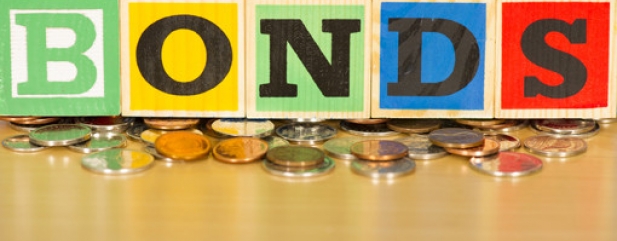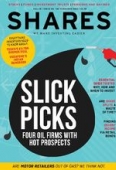Archived article
Please note that tax, investment, pension and ISA rules can change and the information and any views contained in this article may now be inaccurate.
Top deals on the retail bond market

Income investors looking for a higher yield might want to allocate part of their portfolio to retail bonds. These are available from many well-known UK companies with some paying in excess of 5% or 6% per year. Familiar names issuing bonds include Aviva, Severn Trent, Tesco and Unilever.
How do you buy them?
Investors can buy the bonds via their stockbroker in the same way as buying individual company shares and when held in an ISA or SIPP (self-invested personal pensions) the interest would be tax-free.
You can apply for the bonds when they are first issued or buy them after they have started trading. They are issued at par or face value and will be redeemed at the same level on maturity, as long as the issuer doesn’t run into financial difficulties. At all other times the prices will fluctuate.
Admittedly there have only been a small amount of new retail bonds issued over the past few years; however, there are still plenty of previously-issued bonds which you can buy on the open market and which pay a decent level of income.
What are the risks with bonds?
The three main risks for bond holders are:
1. Interest rates could rise and force the bond prices lower as investors move their money elsewhere.
2. A lack of liquidity could mean that you can’t sell the bonds when you want to.
3. The bond issuer could run into financial difficulties and miss a coupon (interest) payment or go bust.
Patrick Connolly, a certified financial planner at Chase de Vere, says many investors want a competitive level of income without putting their underlying capital at undue risk. ‘Against this backdrop the returns on retail corporate bonds can appear attractive,’ he says.
‘However, investing in a single company is a high risk approach. We have seen how even supposedly strong and secure companies such as the high street banks can get into financial difficulties.’
Despite this warning, we believe bonds can still be good investments as long as you understand and are comfortable with the risks.
How much could I get each year?
People mainly buy retail bonds for the income, which is paid via an annual or semi-annual coupon at a pre-set time in a pre-set amount. You can assess this by looking at the flat or running yield that is calculated by dividing the total annual coupon by the current price.
If you invest after a bond has already started trading, the price is likely to have moved above or below the par value, which means that you will make a capital loss or gain if held to maturity.
This is reflected in the ‘yield to maturity’, which calculates the effective annual return. It is still possible to make money even if you buy a bond above its original issue price.
How to calculate your returns
Russ Mould, investment director at AJ Bell, says that investors looking for a short-term holding, perhaps to combat rising inflation, should consider the 6.25% 2019 bond from property developer St Modwen that trades under the ticker SMP1.
The numbers in the product name refer to the annual return based on the bond’s issue price, and the year in which the bond is wound up and you get your original capital paid back.
‘The St Modwen bond in question matures on 7 November 2019 and trades at around 106p, so the yield to maturity is 4.1%,’ explains Mould.
When interest rates go up it makes the coupons from bonds less attractive and investors tend to sell, driving the price lower and the yield higher until it becomes competitive again. This is less of a concern with issues like the St Modwen bonds as they only have a short time to go until maturity when you get the face value back.
An investor who bought 10,000 of these bonds at the current 106p price would have to pay £10,600 and would lock in a capital loss of £600 if held to maturity in November 2019. The reason they may still want to buy the bonds despite a capital loss is down to the interest (or coupon) payments.
The investor would be entitled to the six remaining six monthly coupons of 3.125% (half of the annual coupon of 6.25%) or £312.50. That would give them £1,875 through coupon payments. When the bond matures in 2019, you would get £10,000 paid back by St Modwen, being the value of the original bonds as if you’d bought them when first issued at 100p.
Your capital loss is therefore £10,600 (amount you paid) minus £10,000 (amount paid back by St Modwen) = £600. However, you then take into the £1,875 received through the coupon payments. So £1,875 minus £600 = an overall profit
of £1,275.
Tesco bond also worth a look
Another product to consider is the 6% 2029 Tesco bond. We think the supermarket is back in good health following previous trading and cultural problems. We’re confident the company will be able to pay back bondholders in 2029 and maintain regular coupon payments in the interim.
Tesco’s bond trades under the ticker 40OS and is priced well above the par value at 110p, but even after factoring in the capital loss when the paper redeems at 100p the yield to maturity is still just under 5%.
An investor who bought 10,000 of the bonds would have to pay £11,000 and would earn an annual coupon of £600 every year until they mature in December 2029, whereupon they would get back the face value of £10,000.
Important information:
These articles are provided by Shares magazine which is published by AJ Bell Media, a part of AJ Bell. Shares is not written by AJ Bell.
Shares is provided for your general information and use and is not a personal recommendation to invest. It is not intended to be relied upon by you in making or not making any investment decisions. The investments referred to in these articles will not be suitable for all investors. If in doubt please seek appropriate independent financial advice.
Investors acting on the information in these articles do so at their own risk and AJ Bell Media and its staff do not accept liability for losses suffered by investors as a result of their investment decisions.

 magazine
magazine










